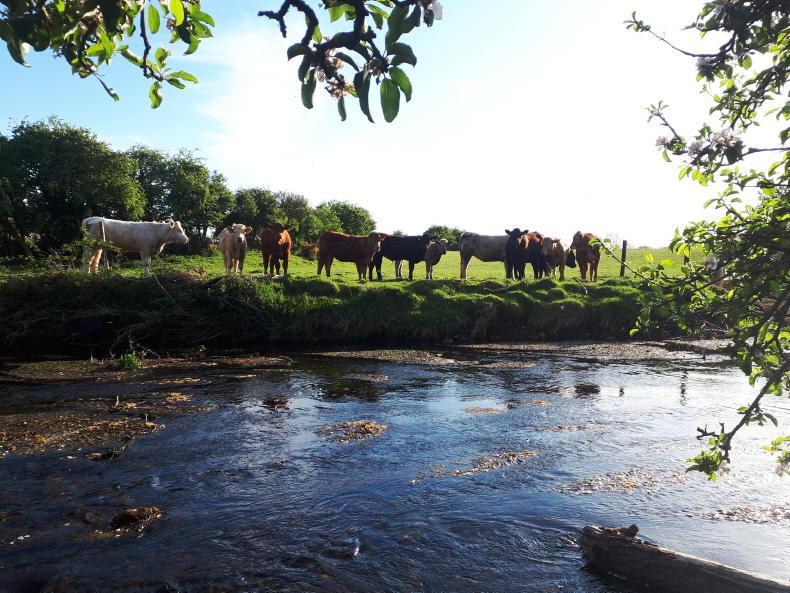Some €20m has been allocated to the Waters of LIFE project, which has the aim of turning declining water quality trends around in six high-status river catchments, with the project to be headed up by the Department of Housing.
The project will focus on whole-catchment approaches to maintaining high-status water bodies and better understanding the factors influencing declines in the water quality of rivers.
Some €9.5m of the project’s funding has been committed by the EU under the LIFE programme.
A total of 16 project partners are involved in the initiative, with the Department of Agriculture, Teagasc, Local Authorities Waters Programme (LAWPRO), the Environmental Protection Agency (EPA) and Coillte among those selected.
Catchments selected for the project:
The Shournagh, Co Cork, near Tower and Blarney.The Awbeg, Co Cork, near Kanturk.The Island River in the Galway-Roscommon area near Ballymoe.Rivers in the catchment of Lough Graney, Co Clare.The Avonmore, Co Wicklow.The Sheen, Kerry (project control river).Farmer opportunities
Results-based agri-environmental schemes are set to be developed in three of the selected catchments, with the findings of these schemes to be used to inform the development of future farm schemes.
These results-based schemes will be developed in consultation with farmers and farming organisations this year, with a view to opening the schemes to applications in 2023, according to Waters of LIFE.
Local solutions
Ireland is one of the few EU member states to still have a number of high-status water bodies, the Department of Housing has said. This status signifies high biodiversity and pristine water quality.
“The ongoing loss of high-status waters is among the most concerning, protracted and persistent water quality trends in Ireland,” said Minister of State at the Department of Housing Malcolm Noonan at the launch of the project.
“The six high-status rivers selected for this scheme – and the communities, industries and local economy surrounding them – will benefit greatly from the implementation of locally-tailored solutions to be delivered through this scheme.
“No doubt, many learnings will be found and can be applied to our future efforts to preserve and improve our high-status waters,” he said.
Quality decline
The number of such high-status water bodies has declined from approximately 32% to 20% from 1990 to 2020.
Agriculture has been identified as a “significant pressure” on water quality in four of the six catchments selected for the project.
“With 16 partners involved, this project will be highly collaborative in nature and the shared expertise among these partners will bring great benefit to the scheme,” Minister Noonan added.
“I also look forward to working together with the communities and landowners in each of the selected regions to bring out the best in these rivers,” he said.
Some €20m has been allocated to the Waters of LIFE project, which has the aim of turning declining water quality trends around in six high-status river catchments, with the project to be headed up by the Department of Housing.
The project will focus on whole-catchment approaches to maintaining high-status water bodies and better understanding the factors influencing declines in the water quality of rivers.
Some €9.5m of the project’s funding has been committed by the EU under the LIFE programme.
A total of 16 project partners are involved in the initiative, with the Department of Agriculture, Teagasc, Local Authorities Waters Programme (LAWPRO), the Environmental Protection Agency (EPA) and Coillte among those selected.
Catchments selected for the project:
The Shournagh, Co Cork, near Tower and Blarney.The Awbeg, Co Cork, near Kanturk.The Island River in the Galway-Roscommon area near Ballymoe.Rivers in the catchment of Lough Graney, Co Clare.The Avonmore, Co Wicklow.The Sheen, Kerry (project control river).Farmer opportunities
Results-based agri-environmental schemes are set to be developed in three of the selected catchments, with the findings of these schemes to be used to inform the development of future farm schemes.
These results-based schemes will be developed in consultation with farmers and farming organisations this year, with a view to opening the schemes to applications in 2023, according to Waters of LIFE.
Local solutions
Ireland is one of the few EU member states to still have a number of high-status water bodies, the Department of Housing has said. This status signifies high biodiversity and pristine water quality.
“The ongoing loss of high-status waters is among the most concerning, protracted and persistent water quality trends in Ireland,” said Minister of State at the Department of Housing Malcolm Noonan at the launch of the project.
“The six high-status rivers selected for this scheme – and the communities, industries and local economy surrounding them – will benefit greatly from the implementation of locally-tailored solutions to be delivered through this scheme.
“No doubt, many learnings will be found and can be applied to our future efforts to preserve and improve our high-status waters,” he said.
Quality decline
The number of such high-status water bodies has declined from approximately 32% to 20% from 1990 to 2020.
Agriculture has been identified as a “significant pressure” on water quality in four of the six catchments selected for the project.
“With 16 partners involved, this project will be highly collaborative in nature and the shared expertise among these partners will bring great benefit to the scheme,” Minister Noonan added.
“I also look forward to working together with the communities and landowners in each of the selected regions to bring out the best in these rivers,” he said.






 This is a subscriber-only article
This is a subscriber-only article











SHARING OPTIONS: